Procurement is a pivotal function for any business upon which the pillars of strategic sourcing and cost management rest. This is more than just buying; it’s about acquiring goods and services in a way that optimizes value for an organization. Ultimately, understanding and refining this process is essential for steering your business towards more profitable and sustainable futures.
In this blog, we will dissect procurement’s pivotal role, from understanding what it entails to its execution in your business setting, demystifying common misconceptions along the way. By navigating each procurement stage—need identification, supplier evaluation, contract negotiation, and more—we’ll offer insights into making strategic decisions and frameworks that resonate with business objectives.
Moreover, we’ll tackle challenges encountered in procurement head-on, and explore how procurement automation software can streamline and enhance procurement practices. Whether it’s combating manual inefficiencies or leveraging technology for better outcomes, this blog aims to equip you with knowledge and strategies for a more efficient and robust procurement process.
Understanding Procurement Fundamentals
In the world of business, procurement stands as a cornerstone function, yet the nuances of procurement, how it diverges from related concepts like purchasing and supply chain management, and its objectives often remain shrouded in ambiguity. Let’s demystify these.
What is Procurement?
Procurement is a strategic business function handling the sourcing, acquisition, and management of the resources needed for organizational operations. Procurement’s strategic nature lies in its ability to influence and drive value across the entire organization by optimizing spending, leveraging supplier relationships for strategic advantage, and ensuring the timely availability of goods and services.
The Procurement Process
The procurement process can be broadly categorized into several key stages, each of which plays a critical role in ensuring the effectiveness of the procurement function:
To understand each stage of the procurement process step-by-step, let’s use a practical example of a procurement workflow within a mid-sized manufacturing company that requires new machinery for its production line.
1. Need Identification
This is where the company figures out what it needs to buy or acquire to improve its operations.
- Process: The production manager at XYZ Corp notices a decline in production efficiency and identifies the need for a new manufacturing machine to meet increasing customer demand.
- Documentation: A Needs Assessment Report is prepared, detailing the type of machinery needed, the expected improvement in production efficiency, and the budget.
A report like the one below is submitted to the procurement department.
Needs Assessment Report for XYZ Corp
Executive Summary
This report identifies the need for new manufacturing machinery at XYZ Corp to address a decline in production efficiency and to meet increasing customer demand. After a detailed analysis by the production management team, it has been concluded that investing in a new manufacturing machine is essential for improving production rates and efficiency. This document outlines the need identification process, expected improvements, and budget estimation for the procurement of the necessary machinery.
1. Need Identification
Requirements
- Observation: The production manager noticed a consistent decline in production efficiency over the last quarter, with a 15% decrease in output compared to the previous year.
- Analysis: An in-depth analysis revealed that the current manufacturing machine is operating at 75% of its intended capacity, leading to longer production times and increased downtime for maintenance.
- Requirement: To address this issue and meet a 20% increase in customer demand, it is imperative to procure a new manufacturing machine.
Expected Improvement
- Efficiency Increase: The new machinery is expected to operate at 95% efficiency, reducing production times by 20% and maintenance downtime by 30%.
- Capacity Boost: It will also increase our production capacity by 25%, allowing us to meet the current and anticipated customer demand.
2. Specifications
- Type of Machinery: High-Efficiency CNC Machine
- Key Features:
- Advanced automation capabilities
- Energy-efficient operations
- Enhanced precision and speed
- Suppliers: Identified three leading suppliers offering the latest models that match our specifications.
3. Budget Estimation
- Cost of Machinery: $500,000
- Installation and Training: $50,000
- Total Investment: $550,000
- Return on Investment (ROI): Estimated at 2 years, considering the increased production efficiency and capacity.
4. Recommendation
Based on the need identification and the analysis conducted, it is recommended that XYZ Corp proceeds with the procurement of the new manufacturing machine. This investment is critical for enhancing production efficiency, meeting the growing customer demand, and maintaining our competitive edge in the market.
5. Next Steps
This Needs Assessment Report is submitted to the procurement department for review and approval. Following approval, the procurement process will commence, targeting installation and operation of the new machine within the next six months.
2. Supplier Evaluation and Selection
- Process: The procurement team conducts market research to identify potential suppliers. They send out Requests for Information (RFI) to gather initial data on suppliers’ capabilities and compliance with industry standards.
- Documentation: Based on responses to the RFI, the team shortlists suppliers and sends out Requests for Proposal (RFP) to obtain detailed bids, including pricing, delivery timelines, and maintenance services.
- Evaluation: The procurement team evaluates the proposals using a Supplier Scorecard, focusing on criteria such as cost, quality, delivery time, and after-sales service.
- Selection: XYZ Corp selects the supplier offering the best value proposition.
Let’s see how XYZ Corp might actually go about this based on above steps.
- Market Research: The procurement team at XYZ Corp starts by identifying 10 potential suppliers globally who manufacture the required machinery.
- RFI Process:
- Action: RFIs are sent out to these 10 suppliers.
- Objective: To collect preliminary information on each supplier’s capabilities, certification, and compliance with safety and environmental standards.
- RFI Responses:
- Received: Responses from 8 out of 10 suppliers.
- Outcome: 2 suppliers were eliminated due to inadequate responses or failure to meet basic compliance criteria.
- RFP Issuance:
- Action: Detailed RFPs are sent to the remaining 8 suppliers.
- Content: The RFPs request information on pricing for 5 units of the machinery, delivery timelines (specifically looking for delivery within 3 months), and details on maintenance services and warranties.
- RFP Responses:
- Received: All 8 suppliers respond with their bids.
- Variation: Prices range from $50,000 to $75,000 per unit, with delivery times from 2 to 5 months and varying warranties and maintenance service packages.
- Supplier Scorecard Creation:
- Criteria: Cost (30%), Quality (30%), Delivery Time (20%), and After-Sales Service (20%).
- Scoring: Suppliers are scored out of 100 based on their responses.
- Scoring Example:
- Supplier A scores 85, offering the best balance of cost ($52,000 per unit), quality (ISO 9001 certified), delivery time (3 months), and comprehensive after-sales service.
- The lowest score was 65, with the supplier offering a low price but longer delivery times and limited after-sales service.
- Selection:
- Decision: XYZ Corp selects Supplier A, as it offers the best value proposition according to the scorecard.
- Justification: Despite not being the cheapest, Supplier A provides the best balance of all evaluated criteria, aligning with XYZ Corp’s needs for quality, timely delivery, and strong after-sales support.
- Overview:
- RFI Sent: 10 suppliers
- RFI Responses Received: 8 suppliers
- RFP Sent: 8 suppliers
- RFP Responses Received: 8 suppliers
- Price Range: $50,000 – $75,000 per unit
- Delivery Times Offered: 2 – 5 months
- Selection: Supplier A with a score of 85/100
This simulation demonstrates how XYZ Corp would evaluate and select a supplier for their procurement needs, using a structured approach and quantifiable data to make an informed decision that balances cost, quality, delivery time, and after-sales service.
3. Contract Negotiation
- Process: The procurement team and the selected supplier enter into negotiations to finalize the terms of the contract.
- Documentation: Negotiations result in a Supply Agreement, which outlines the terms of the purchase, including pricing, delivery schedule, payment terms, warranty, and penalties for non-compliance.
The Supply Agreement would look like the one below.
Between XYZ Corp (“Buyer”) and Supplier A (“Supplier”)
This Supply Agreement (“Agreement”) is made as of (Date), by and between XYZ Corp, located at (Buyer’s Address), and Supplier A, located at (Supplier’s Address).
1. Products
The Supplier agrees to supply, and the Buyer agrees to purchase (Description of Machinery) (“Products”) in accordance with the terms and conditions of this Agreement.
2. Pricing
The price for each Product shall be $52,000 (“Price”). The total Price for (Quantity) units shall be (Total Price).
3. Delivery Schedule
The Supplier agrees to deliver the Products to (Delivery Address) on or before (Delivery Date). Time is of the essence in this Agreement.
4. Payment Terms
The Buyer shall pay the Supplier 30% of the total Price upon the execution of this Agreement as a deposit. The remaining 70% shall be paid within 30 days of delivery and acceptance of the Products by the Buyer.
5. Inspection and Acceptance
The Buyer shall have (Number) days from the date of delivery to inspect the Products and notify the Supplier of any defects. Acceptance of the Products shall occur after the inspection period, provided no defects have been identified.
6. Warranty
The Supplier warrants that the Products shall be free from defects in material and workmanship for a period of (Warranty Period) from the date of delivery. During the warranty period, the Supplier shall repair or replace, at its option, any defective Products.
7. Confidentiality
Both parties agree to maintain the confidentiality of this Agreement and any proprietary information exchanged during the term of this Agreement.
8. Penalties for Non-Compliance
If the Supplier fails to deliver the Products by the agreed delivery date, the Supplier shall pay the Buyer a penalty of (Penalty Amount) per day for each day of delay.
9. Termination
This Agreement may be terminated by either party upon (Number) days written notice if the other party breaches any of its obligations under this Agreement and fails to cure such breach within (Number) days after receiving written notice.
10. Governing Law
This Agreement shall be governed by the laws of (Jurisdiction).
11. Signatures
IN WITNESS WHEREOF, the parties hereto have executed this Supply Agreement as of the first date written above.
XYZ Corp:
By: ___________________________
Name:
Title:
Date:
Supplier A:
By: ___________________________
Name:
Title:
Date:
4. Purchase Order Processing
- Process: With the Supply Agreement in place, XYZ Corp issues a Purchase Order (PO) to the supplier, formalizing the request for the machinery.
- Documentation: The PO includes detailed specifications of the machinery, quantity, agreed price, delivery date, and PO number for tracking.
This is what the purchase order would typically look like.
Vendor
Name: Gadget World Inc.
Address: 123 tech Lane, Silicon Valley, CA 94088
Phone: (555) 123-4567
Email: [email protected]
Customer
Name: John Doe
Company Name: Doe Enterprises
Address: 456 Innovation Drive, tech Park, Boston, MA 02110
Phone: (555) 987-6543
Email: [email protected]
| Code | Product Description | Quantity | Unit Price | Amount |
|---|---|---|---|---|
| 1001 | Wireless Mouse | 10 | $25.00 | $250.00 |
| 1002 | Bluetooth Keyboard | 5 | $45.00 | $225.00 |
| 1003 | USB-C Hub | 15 | $20.00 | $300.00 |
5. Delivery and Inspection
- Process: Upon receiving the machinery, the receiving department checks the shipment against the PO and the Supply Agreement.
- Documentation: A Goods Received Note (GRN) is prepared to document the condition and quantity of the received machinery. Any discrepancies are reported immediately to the supplier for resolution.
This is a sample template to depict how the Goods Received Note would look like.
Delivery Information
P.O. Number: 123456
Supplier: Gadget World Inc.
Delivery Date: February 15, 2024
Received By: John Doe
Goods Received
| Code | Product Description | Ordered Quantity | Received Quantity | Condition | Comments |
|---|---|---|---|---|---|
| 1001 | Wireless Mouse | 10 | 10 | Good | N/A |
| 1002 | Bluetooth Keyboard | 5 | 5 | Good | N/A |
| 1003 | USB-C Hub | 15 | 15 | Good | Box damaged, items inspected and found to be intact |
Delivery and Inspection Process
Upon receiving the machinery, the receiving department checked the shipment against the PO and the Supply Agreement. A Goods Received Note (GRN) was prepared to document the condition and quantity of the received machinery. Any discrepancies were reported immediately to the supplier for resolution.
Notes
All received items have been inspected and found to be in good condition, except for one damaged box which was noted above. The contents were verified to be intact and undamaged. No further discrepancies were noted.
6. Performance Assessment and Relationship Management
- Process: After installation, the production team assesses the machinery’s performance against the specifications in the PO and the expected improvements in production efficiency.
- Documentation: A Supplier Performance Evaluation is conducted, documenting any issues or successes. This evaluation is shared with the supplier as part of ongoing relationship management.
This is what the supplier performance evaluation framework for XYZ Corp might incorporate.
- Evaluation Criteria and Scoring System
- Delivery Timeliness: Was the machinery delivered within the agreed timeline?
- Product Quality: Does the machinery meet the quality standards as specified in the PO?
- Adherence to Specifications: How well does the machinery match the specifications outlined in the PO?
- After-Sales Support: Quality of the after-sales service including training, maintenance, and responsiveness to queries.
Each criterion is scored on a scale of 1 to 10, where 10 represents the highest level of satisfaction.
- Data Collection
- Delivery Date: February 15, 2024
- Installation Date: February 25, 2024
- Evaluation Period: 3 months post-installation
- Supplier Performance Scores
- Delivery Timeliness: 9/10 (Delivered on time)
- Product Quality: 8/10 (High quality with minor adjustments needed)
- Adherence to Specifications: 10/10 (Perfectly matches specifications)
- After-Sales Support: 7/10 (Good support, with room for improvement in response times)
- Overall Performance Score
The overall performance score is calculated as the average of the individual scores.
The overall performance score for Supplier A, based on the evaluation criteria, is 8.5 out of 10. This score indicates a high level of satisfaction with Supplier A’s performance in delivering and supporting the new manufacturing machinery for XYZ Corp.
This structured approach to supplier performance evaluation facilitates transparent communication between XYZ Corp and Supplier A, setting the stage for a robust, ongoing business relationship that can adapt and improve over time. Using a standardized mechanism ensures vendor relationships can be effectively evaluated and compared.
7. Invoice Processing and Payment
This stage comprises the following steps –
- Invoice Receipt: The supplier sends an Invoice for the machinery to XYZ Corp’s accounts payable department.
- PO Matching: The accounts payable team conducts a three-way match between the PO, the GRN, and the Invoice to ensure all details align.
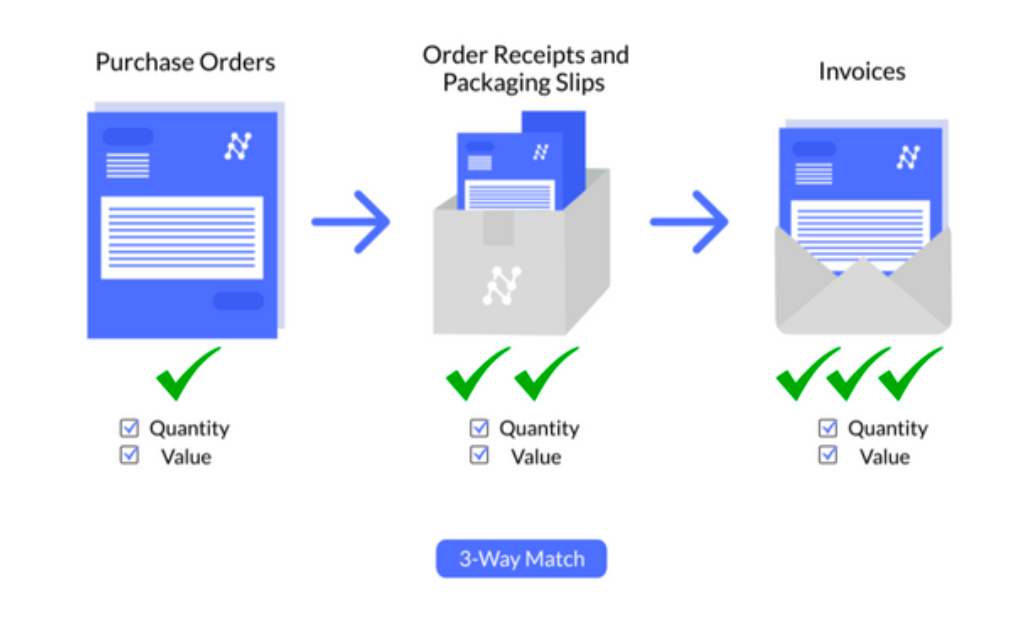
- Payment Processing: Once the three-way match is confirmed, a Payment Authorization Form is prepared, and the payment is processed according to the terms of the Supply Agreement.
- Data Entry into ERP: Payment details are recorded in the Payment Voucher, and the transaction is entered into the ERP / financial system for reconciliation, record-keeping, etc.
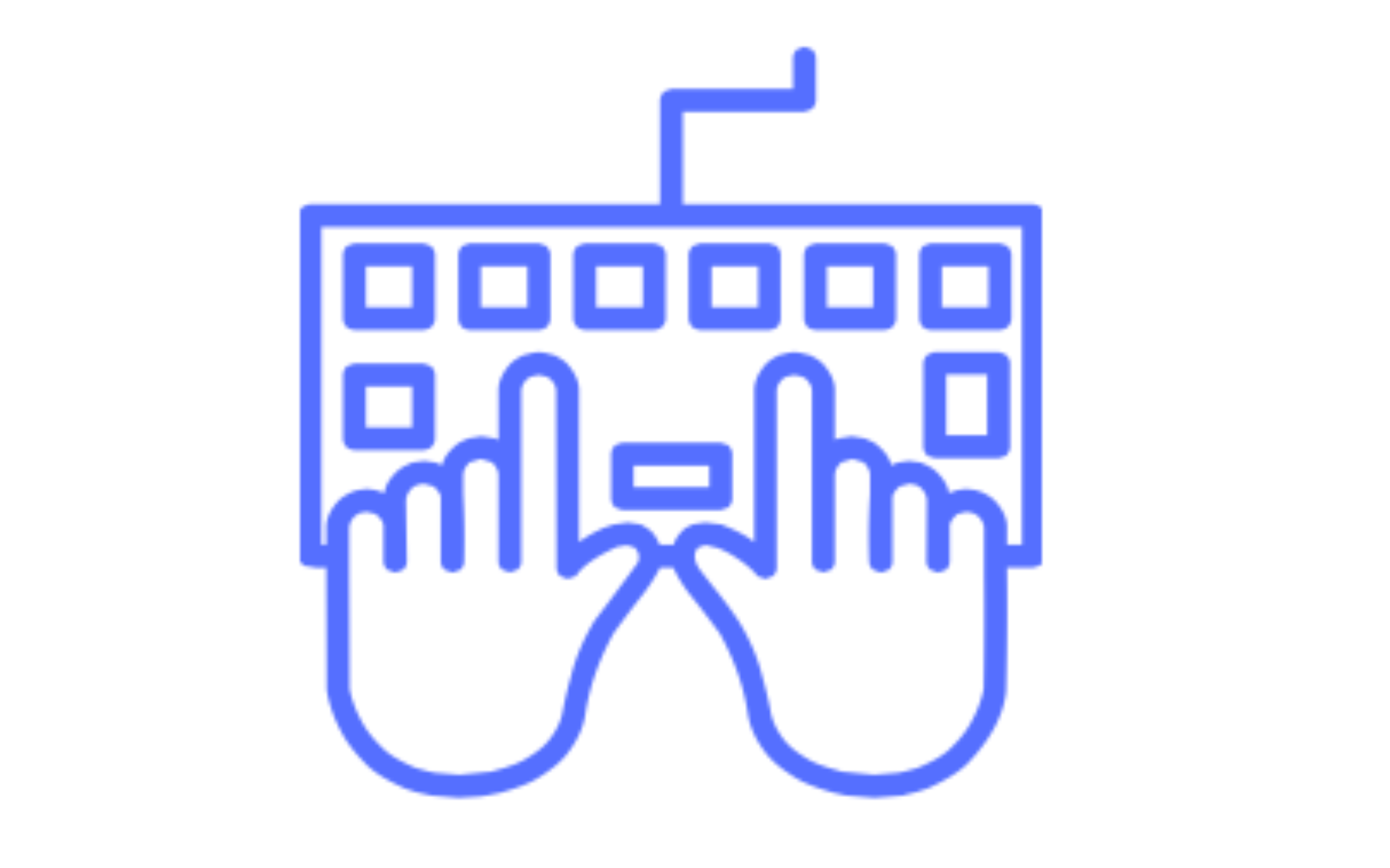
8. Reconciliation and Record Keeping
- Process: The finance department periodically reconciles the payments made with the bank statements to ensure accuracy.

- Documentation: All documents related to the procurement process, including the Needs Assessment Report, RFP, Supplier Scorecard, Supply Agreement, PO, GRN, Invoice, Payment Authorization Form, and Payment Voucher, are filed both in physical and digital formats for audit purposes.
Procurement Challenges and How to Solve Them
In the intricate dance of procurement, businesses face a myriad of challenges that can disrupt the rhythm of their operations and impact their bottom line. Understanding these challenges is the first step toward mitigating their effects and ensuring a seamless procurement process. Let’s delve into some of the most common hurdles businesses encounter in procurement and explore strategies for overcoming them.
Manual Processes and Inefficiencies
Problem: In too many organizations, procurement remains mired in manual processes. Paper-based systems, from requisition forms to purchase orders and invoices, are not just relics of a bygone era; they are active impediments to efficiency. These manual systems introduce several problems: they are time-consuming, difficult to track, and prone to human error & fraud. The result is a procurement process that is slower, more error-prone, and more costly than it needs to be.
Example: A medium-sized manufacturing company relied heavily on manual procurement processes, with purchase requests, orders, and invoices all processed on paper. This led to significant inefficiencies, including delayed order processing times and frequent errors in order quantities and pricing. For instance, a manual entry error resulted in ordering an excessive quantity of raw materials, which not only tied up capital unnecessarily but also incurred additional storage costs.
Solution: Prioritize the adoption of technologies that offer clear benefits in terms of efficiency, cost savings, and enhanced supplier collaboration. This basically refers to procurement automation software. Why is this important? Consider the time spent manually entering data into spreadsheets or chasing down paper trails to approve a purchase order. Each minute spent on these tasks is a minute not spent on strategic activities that could drive the business forward. Moreover, errors caused by manual processes can lead to incorrect orders, overpayments, and even fraud, each of which directly impacts the bottom line. We will discuss procurement automation software in the next section.
Visibility and Control Over Spend
Problem: Lack of visibility into company-wide spending is another significant challenge. Without a clear picture of where money is going, it’s nearly impossible to manage budgets effectively, identify cost-saving opportunities, or ensure compliance with corporate spending policies. This lack of visibility stems from several factors including
- decentralised purchasing,
- inadequate data collection,
- and the absence of integrated procurement systems.
Example: A national retail chain struggled with visibility into its company-wide spending due to decentralized purchasing across its multiple locations. Each store operated independently, making purchases based on immediate needs without a centralized oversight or strategy. This lack of visibility led to inconsistencies in pricing, missed opportunities for bulk discounts, and difficulty in enforcing corporate spending policies. By implementing a centralized procurement software, the company gained real-time visibility into its spend across all locations, allowing for better budget management, strategic vendor negotiations, and adherence to spending policies.
Solution: Adopting an integrated procurement software solution is one of the most effective ways to gain visibility and control over company-wide spending. These systems centralize purchasing data, allowing for real-time tracking of expenditures across different departments and projects.
- Standardize Procurement Processes and Forms
- Create a well-defined and streamlined approval process.
- Integrate Procurement with Other Business Systems
- Category Management: Adopt category management practices to optimize spending and supplier performance across different categories of goods and services. This allows for analyzing spending patterns, market trends, and supplier capabilities to make informed procurement decisions.
Quality Assurance
The Challenge: Ensuring the quality of goods and services procured is a critical aspect of the procurement process, directly impacting the operational efficiency, customer satisfaction, and overall reputation of a business. This challenge becomes even more pronounced when dealing with new suppliers or products, where the established trust and track records of performance do not exist. The inherent risks include receiving substandard or non-compliant products, facing supply chain disruptions due to quality issues, and the potential for increased costs associated with returns, repairs, or replacements. Moreover, in industries where safety and compliance are paramount, such as pharmaceuticals, automotive, or food and beverage, the implications of inadequate quality assurance can extend to legal liabilities and regulatory penalties.
Example: Let’s consider a real-world practical example of how a company, XYZ Manufacturing, specializing in automotive parts, improved its quality assurance process in procurement by implementing a comprehensive strategy.
Solution: Develop and Implement a comprehensive QA framework based on your specific business needs. Let’s look at a sample framework that works in the above example.
XYZ Manufacturing was facing challenges with inconsistent quality from its suppliers, leading to a 15% return rate on procured components, which impacted production timelines and customer satisfaction. The company decided to overhaul its procurement quality assurance process to reduce the return rate to below 5% within one year.
1. Supplier Evaluation and Selection Process:
- Action: XYZ Manufacturing developed a Supplier Scorecard that included criteria such as quality certification (e.g., ISO 9001), on-time delivery rates, defect rates, and responsiveness. Each criterion was weighted based on its importance to XYZ’s operations.
- Data: Suppliers were scored on a scale of 1 to 100. A threshold score of 75 was set for a supplier to qualify as a primary supplier.
- Outcome: This process led to the identification and selection of suppliers with an average score of 85, improving the overall quality of incoming materials.
2. Establishing Quality Standards and Expectations:
- Action: The company defined specific quality standards for each component, including dimensional accuracy, material specifications, and performance under stress tests, aligning them with international automotive standards.
- Data: For instance, dimensional accuracy for critical components was set at a tolerance of ±0.02mm, directly tied to product performance in the field.
- Outcome: Including these standards in contracts resulted in a 30% reduction in non-compliant parts within the first six months.
3. Collaborative Relationships with Suppliers:
- Action: XYZ Manufacturing initiated a Supplier Partnership Program, which included quarterly review meetings, joint quality improvement projects, and shared performance data.
- Data: Shared data indicated that packaging issues were responsible for 40% of component damage.
- Outcome: Jointly, they developed a new packaging solution, reducing transit-related defects by 50%.
4. Quality Inspection and Testing Regime:
- Action: Implemented a two-stage inspection process: an initial visual inspection followed by random sampling for detailed testing.
- Data: Sampling involved testing 5% of each batch, up from the previous 2%, with a focus on high-risk components.
- Outcome: This led to early detection of issues, decreasing the defect rate by 20%.
5. Leveraging technology for Quality Management:
- Action: XYZ adopted a Quality Management Software (QMS) that integrated with their ERP system, allowing for real-time tracking of supplier performance and quality metrics.
- Data: The QMS generated monthly reports highlighting suppliers with a defect rate higher than 2%, triggering a review process.
- Outcome: Continuous monitoring and feedback improved supplier performance, with 95% of suppliers reducing their defect rates below the 2% threshold within a year.
6. Risk Management and Contingency Planning:
- Action: Developed a risk management framework identifying critical components and establishing alternative suppliers and safety stock levels for each.
- Data: For high-risk components, safety stock levels were increased from 2 weeks to 4 weeks supply.
- Outcome: This strategy minimized production delays due to quality issues, ensuring a 99.8% on-time delivery rate to customers.
By the end of the year, XYZ Manufacturing successfully reduced its return rate from 15% to 4.5%, surpassing its goal. The comprehensive approach to enhancing quality assurance in procurement not only improved operational efficiency and product quality but also strengthened supplier relationships and increased customer satisfaction. This example demonstrates the effectiveness of a data-driven, structured approach to quality assurance in procurement, showcasing the potential for significant improvements through strategic initiatives.
Supplier Relationship Management
Challenge: Managing supplier relationships is a complex yet crucial component of procurement that directly affects a company’s supply chain efficiency, product quality, and overall market competitiveness. The challenge lies in maintaining a balance between securing the best possible terms from suppliers and fostering positive, long-term partnerships that encourage mutual growth, innovation, and resilience to market changes. Common hurdles include communication breakdowns, misaligned objectives, lack of trust, and failure to leverage technological advancements for better collaboration. These issues can lead to supply chain disruptions, increased costs, and missed opportunities for both parties.
Example: Let’s delve into a real-world example of how ElecTech, a leading consumer electronics manufacturer, successfully revamped its Supplier Relationship Management (SRM) strategy to address quality issues, supply chain disruptions, and foster innovation.
Solution: Let’s use the above example to understand the components that need to be incorporated into your SRM strategy.
1. Strategic Supplier Segmentation:
Use the Kraljic Matrix to categorize suppliers based on their risk and impact on your business. This helps in identifying which relationships require more focus and strategic management.
What Is The Kraljic Matrix?
The Kraljic Matrix is one of the most effective ways to deliver accurate supplier segmentation. Although the Kraljic Matrix may appear simple to many procurement professionals, it is often inaccurately applied and this leads to misfiring supplier relationship management programs.

Classify suppliers into strategic partners, leverage suppliers, bottleneck suppliers, and non-critical suppliers. Develop tailored strategies for managing each category, focusing on building deeper relationships with strategic and leverage suppliers.
By understanding the role and importance of each supplier, a company can allocate resources more effectively, ensuring that critical supplier relationships are nurtured and maintained.
2. Develop Joint Objectives and Key Performance Indicators (KPIs):
Collaboratively develop a Balanced Scorecard for supplier performance that includes financial, operational, customer, and innovation perspectives. Set clear, mutually agreed-upon objectives and KPIs with each key supplier. These should align with both parties’ strategic goals and include metrics for quality, delivery, cost improvement, and innovation.
3. Invest in Relationship Building and Trust:
Apply the Trust Equation, which considers factors such as credibility, reliability, intimacy, and self-orientation, to develop stronger relationships.
Understanding The Trust Equation | Trusted Advisor
The Trust Equation is now the cornerstone of our practice: a deconstructive, analytical model of trustworthiness.
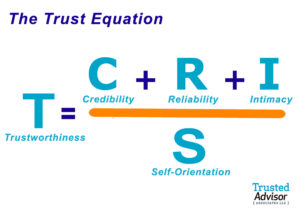
Building trust and understanding leads to more resilient and flexible relationships, capable of withstanding market fluctuations and challenges.
4. Leverage technology for Better Collaboration:
Utilize the SCOR (Supply Chain Operations Reference) model to identify areas for improvement in procurement processes that can be supported by technology.
What is SCOR? A model for improving supply chain management
The supply chain operations reference (SCOR) model helps businesses evaluate and perfect supply chain management for reliability, consistency, and efficiency.

Risk Management
Challenge: Risk management in procurement involves identifying, assessing, and mitigating risks that could impact the supply chain, financial stability, compliance, and overall operational efficiency of an organization. These risks can stem from a variety of sources including supplier reliability, geopolitical factors, regulatory changes, market volatility, natural disasters, and cybersecurity threats. The challenge lies in the dynamic and interconnected nature of these risks, requiring a proactive and comprehensive approach to ensure resilience and continuity in procurement activities.
Solution: To effectively manage risk in procurement, adopting a structured framework is essential. You can choose a framework most suited for you. One widely recognized and expert-recommended approach is the ISO 31000 Risk Management Framework. It provides a universal set of principles and guidelines for risk management that can be tailored to any organization’s specific needs, including those within procurement. Let’s see how the ISO 31000 framework can be specifically applied to procurement risk management, incorporating specific actions and processes:
1. Establishing the Context
- Objective: Understand the internal and external environment of the procurement function. This includes the organizational objectives, procurement strategies, and the regulatory, market, and technological context in which the procurement operates.
- Action: Conduct a comprehensive stakeholder analysis to identify the needs and expectations of internal stakeholders (e.g., procurement and finance departments) and external stakeholders (e.g., suppliers, regulators, and customers).
2. Risk Identification
- Objective: Identify what, where, when, why, and how risks could arise in the procurement process.
- Action: Utilize tools such as SWOT (Strengths, Weaknesses, Opportunities, Threats) analysis and PESTLE (Political, Economic, Social, Technological, Legal, and Environmental) analysis to systematically identify potential risks.
3. Risk Analysis
- Objective: Understand the nature of the risk and its characteristics. This involves assessing the likelihood and impact of identified risks.
- Action: Apply qualitative methods (e.g., expert judgment, risk matrices) and quantitative methods (e.g., statistical analyses, financial models) to evaluate risks. This could involve analyzing historical data on supplier performance, market trends, and incident reports.
4. Risk Evaluation
- Objective: Compare risk analysis results against risk criteria to determine the priority of each risk.
- Action: Use a risk matrix to prioritize risks based on their impact and likelihood. This will help in focusing on the most significant risks that could affect procurement objectives.
5. Risk Treatment
- Objective: Select and implement options to mitigate, transfer, avoid, or accept risks.
- Action: Develop risk treatment plans that may include diversifying suppliers, entering into strategic partnerships, implementing stricter contractual terms, or investing in technology solutions to enhance monitoring and compliance.
By following a system like the ISO 31000 framework, organizations can implement a robust and proactive procurement risk management process. This structured approach enables organizations to minimize risks, improve procurement outcomes, and support the overall strategic objectives of the organization.
Measuring Performance of Procurement
To really drive home improvement, it’s critical to track the right metrics. KPIs such as cost savings are a given, but also focus on supplier performance, cycle times for procurement processes, and adherence to compliance protocols. Aligning these KPIs with your strategic objectives transforms procurement from a back-office function into a forward-thinking, strategic player. For instance, if your organization is pushing for innovation, include metrics that measure suppliers’ contributions to innovation, such as new product ideas or process improvements.
Here is a comprehensive list of metrics that you can consider tracking, based on your objectives. Click on each objective to explore potential KPIs.
| KPI | Calculation |
|---|---|
| Cost Savings | (Baseline Cost – Actual Cost) / Baseline Cost x 100 |
| Cost Avoidance | (Expected Cost – Actual Cost) / Expected Cost x 100 |
| Total Spend Under Management | Total Spend Under Management / Total Procurement Spend x 100 |
| KPI | Calculation |
|---|---|
| Supplier On-time Delivery (OTD) | (Number of On-time Deliveries / Total Deliveries) x 100 |
| Supplier Quality Rate | (Number of Acceptable Goods / Total Goods Received) x 100 |
| Supplier Compliance Rate | (Number of Compliant Supplier Actions / Total Supplier Actions) x 100 |
| KPI | Calculation |
|---|---|
| Purchase Order Cycle Time | Total Time for All Purchase Orders / Number of Purchase Orders |
| Procurement ROI | (Savings – Cost of Procurement Operations) / Cost of Procurement Operations |
| E-Procurement Usage Rate | (Value of E-Procurement Transactions / Total Procurement Transactions) x 100 |
| KPI | Calculation |
|---|---|
| Contract Utilization Rate | (Value of Spend Under Contracts / Total Procurement Spend) x 100 |
| Percentage of Spend with Preferred Suppliers | (Spend with Preferred Suppliers / Total Procurement Spend) x 100 |
| KPI | Calculation |
|---|---|
| Inventory Turnover Rate | Cost of Goods Sold / Average Inventory |
| Inventory Accuracy | (Correct Inventory Records / Total Inventory Records) x 100 |
| Days of Inventory on Hand (DOH) | (Average Inventory / Cost of Goods Sold) x 365 |
| KPI | Calculation |
|---|---|
| Sustainable Procurement Rate | (Sustainable Procurement Spend / Total Procurement Spend) x 100 |
| Supplier Risk Assessments Completed | (Number of Supplier Risk Assessments Completed / Total Number of Suppliers) x 100 |
Benchmarking
There’s much to learn from the outside world. Benchmarking against industry standards and peers helps you understand where you stand and where you need to go. It’s about identifying gaps in your procurement practices and finding inspiration in the best practices out there. This could range from adopting new technologies to restructuring supplier contracts for better flexibility and cost efficiency.
APQC’s Open Standards Benchmarking in Procurement highlights median performance levels on crucial procurement benchmarks, such as total cost to perform the procurement process, average supplier lead time, and percentage of purchase orders approved electronically, offering a broad perspective on how organizations can measure and improve their procurement functions.
Procurement Key Benchmarks
Featuring data from APQC’s Open Standards Benchmarking in Procurement, these articles highlight the median performance level on important procurement benchmarks for organizations.Measures that are included are the total cost to perform the procurement process, average supplier lead time, percentage of purchase orders approved electronically, and more.

You can browse the internet for more industry and use case specific benchmarks.
Procurement Automation
Procurement Automation refers to the use of digital technology to streamline and enhance the procurement process from end to end. It encompasses automating the routine tasks and workflows associated with procuring goods and services, thereby reducing manual efforts, minimizing errors, and speeding up transactions. This automation extends across various facets of procurement, including supplier selection, contract management, purchase order processing, and invoice reconciliation.
The adoption of Procurement Automation tools not only optimizes operational efficiencies but also provides strategic advantages. It enables businesses to gain real-time insights into their spending, improve compliance with procurement policies, and foster stronger relationships with suppliers through more efficient and transparent processes. Ultimately, Procurement Automation is about leveraging technology to make procurement more strategic, less time-consuming, and more cost-effective.
Automated Procurement Process
To illustrate the transformative impact of Procurement Automation, let’s revisit the procurement process outlined earlier, now automated using Nanonets Procurement Automation Software:
Need Identification (Automated): Nanonets integrates with your choice of documentation software and triggers the start of the workflow when a new Needs Assessment Report is submitted in your documentation app.
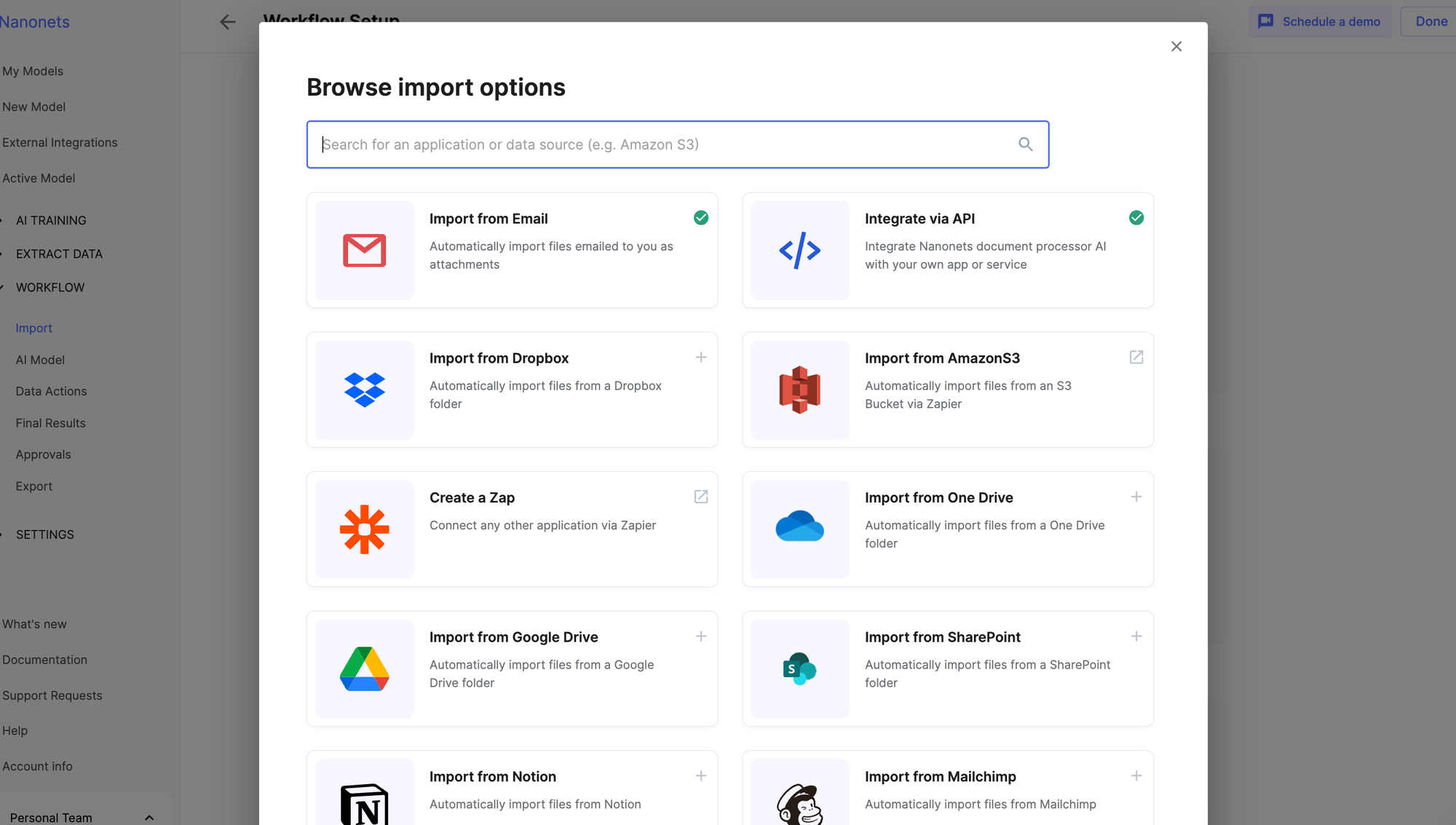
Supplier Evaluation and Selection: The procurement department conducts supplier evaluation manually, and selects the best-suited vendor. A vendor account is created in the ERP system if it does not exist already.
Contract Negotiation (Streamlined): Nanonets supports digital contract management to facilitate the creation, negotiation, and signing of contracts. The procurement department creates templates, tracks changes, and manages approvals all from Nanonets Platform, thus streamlining the negotiation process.
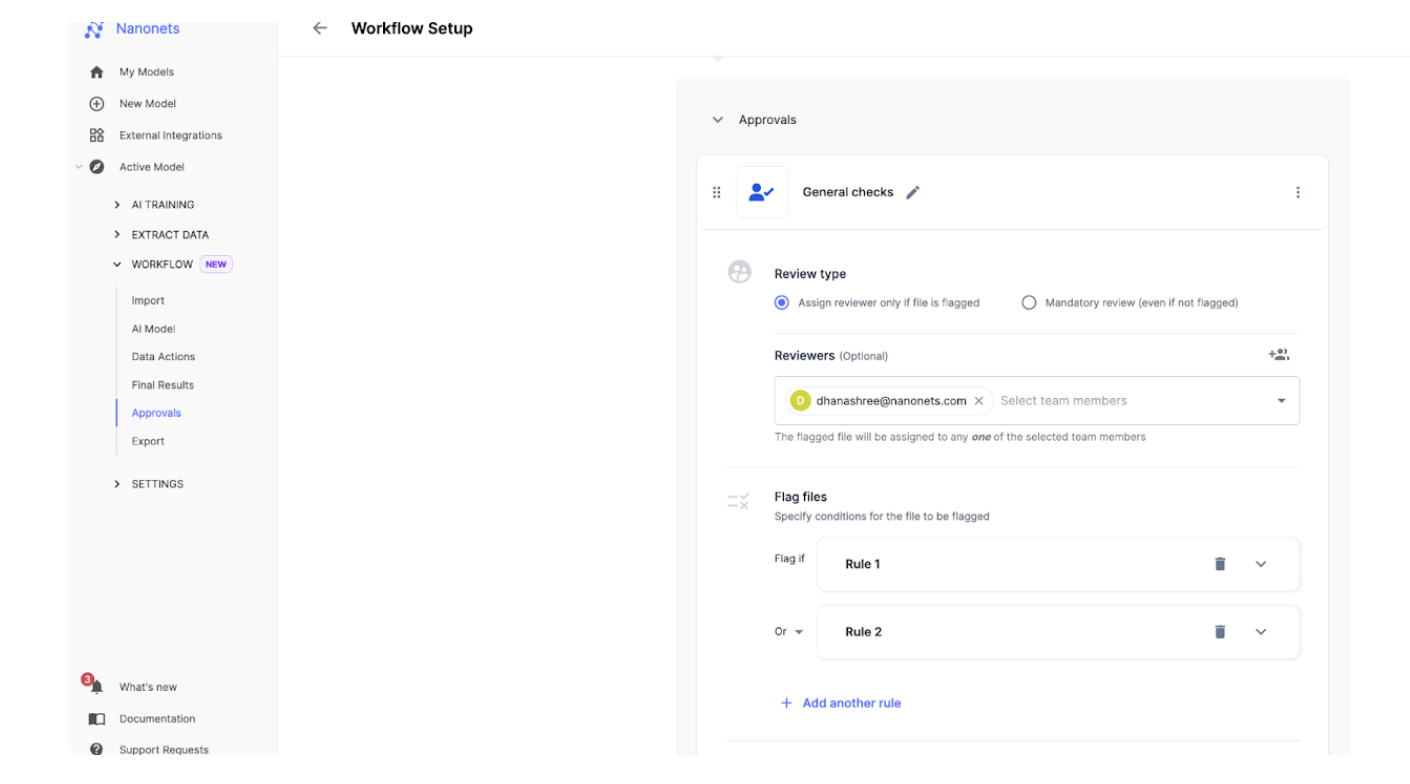
Purchase Order Processing (Automated): Digital POs are created on Nanonets by the team, and sent directly to suppliers through mail.
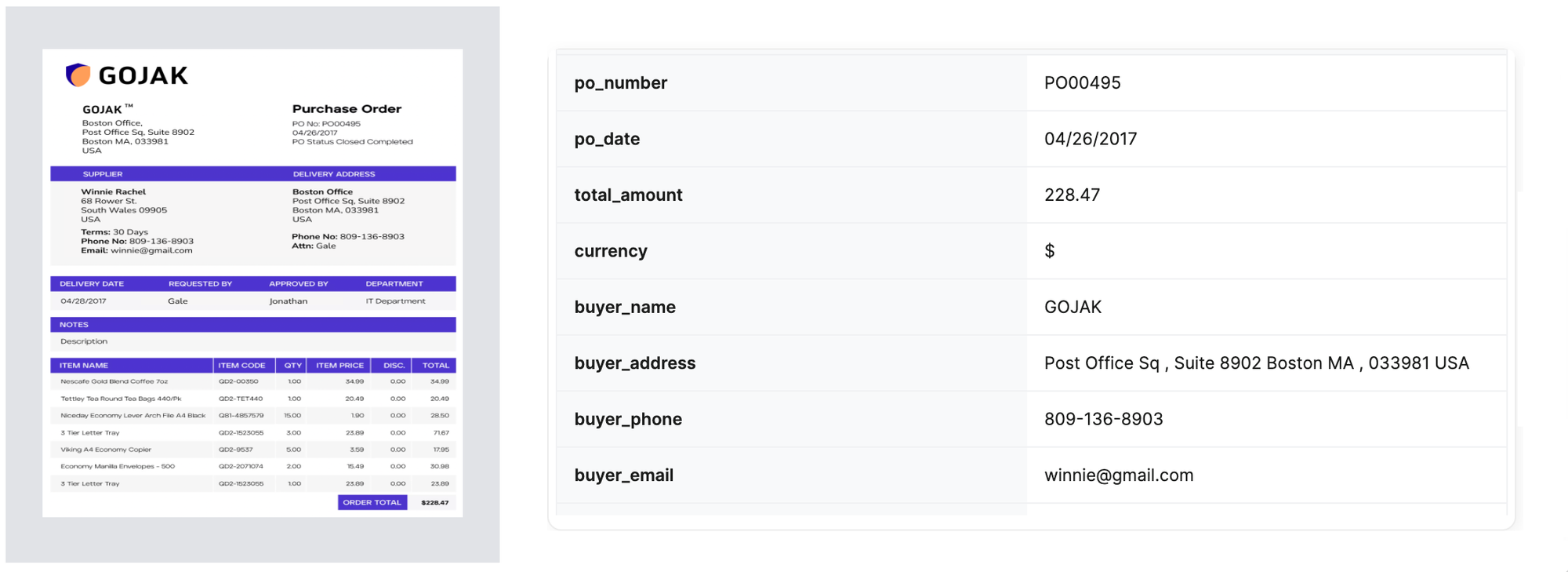
Delivery and Inspection: The team manually verifies the receipt of goods against the PO and contract terms, and generates a Goods Received Note.
Invoice Capture (Automated): Invoices are captured instantly thanks to the wonders of mobile technology and seamless integrations to import receipts from your apps and databases.
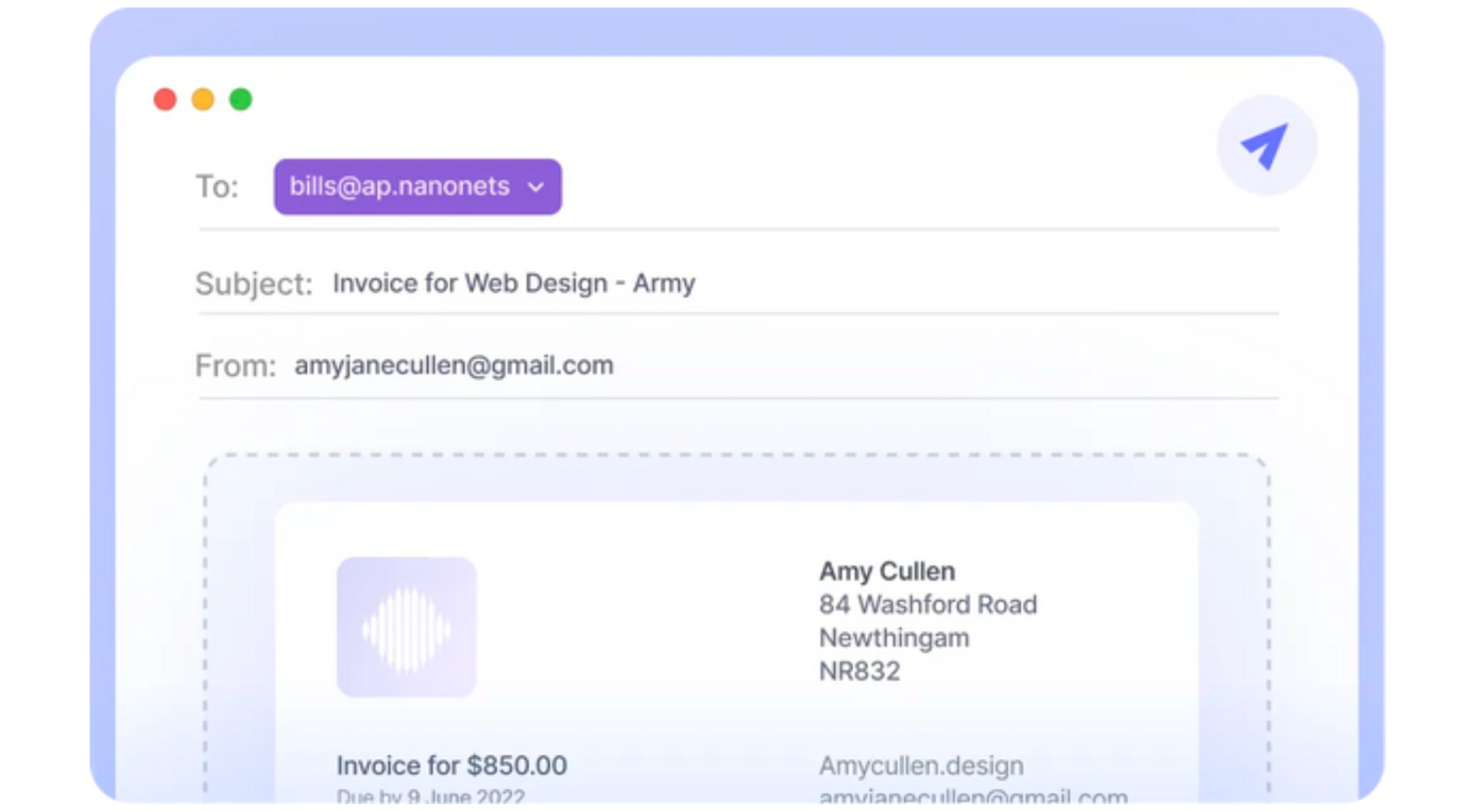
Data Extraction (Automated): Optical Character Recognition (OCR) technology steps in, extracting structured data from invoices into digital data faster than you can blink.
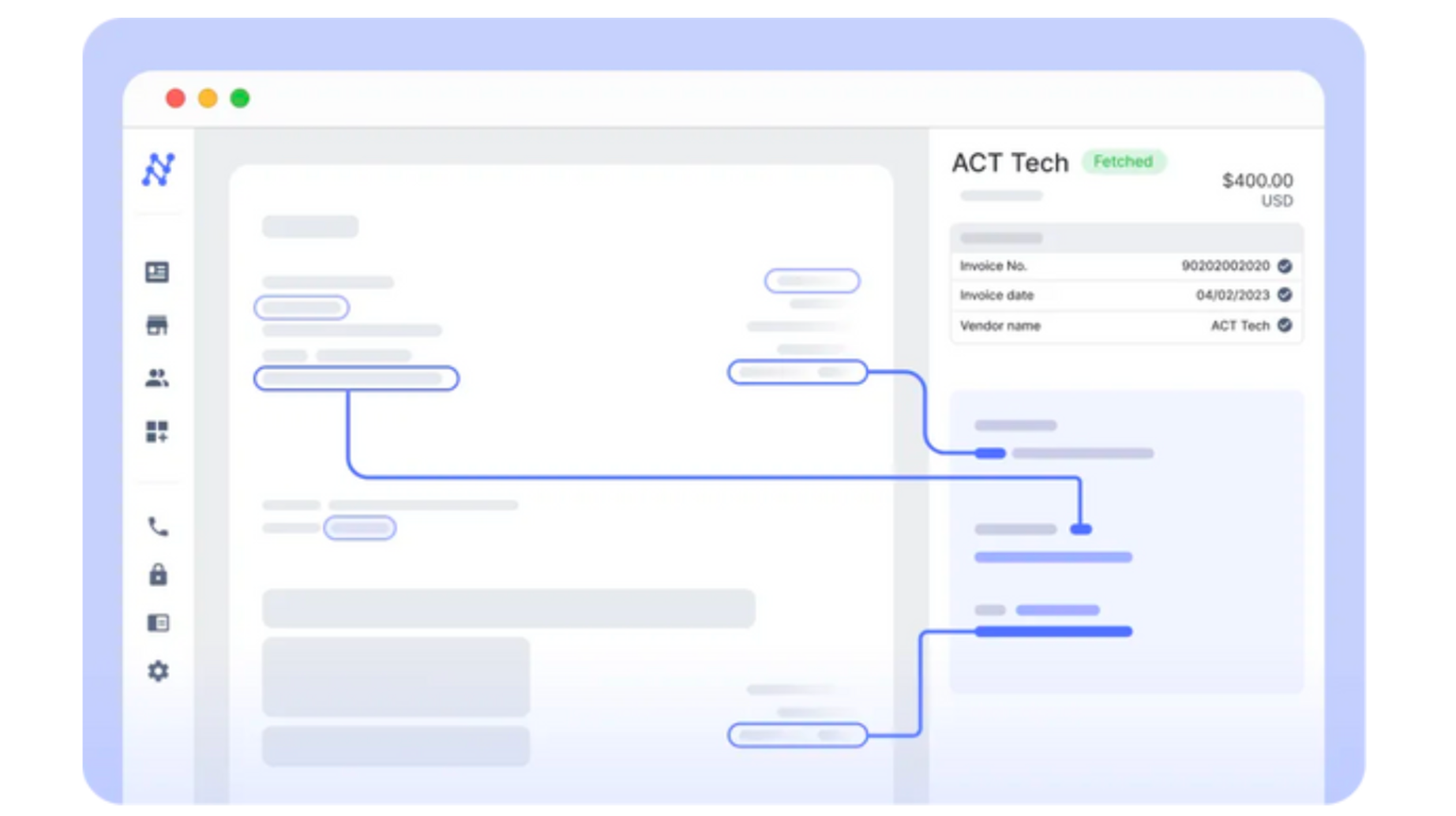
GL Coding and Data Export to ERP (Automated): Nanonets uses NLP and LLMs to automate GL coding, and syncs data with your ERP and other apps instantly.
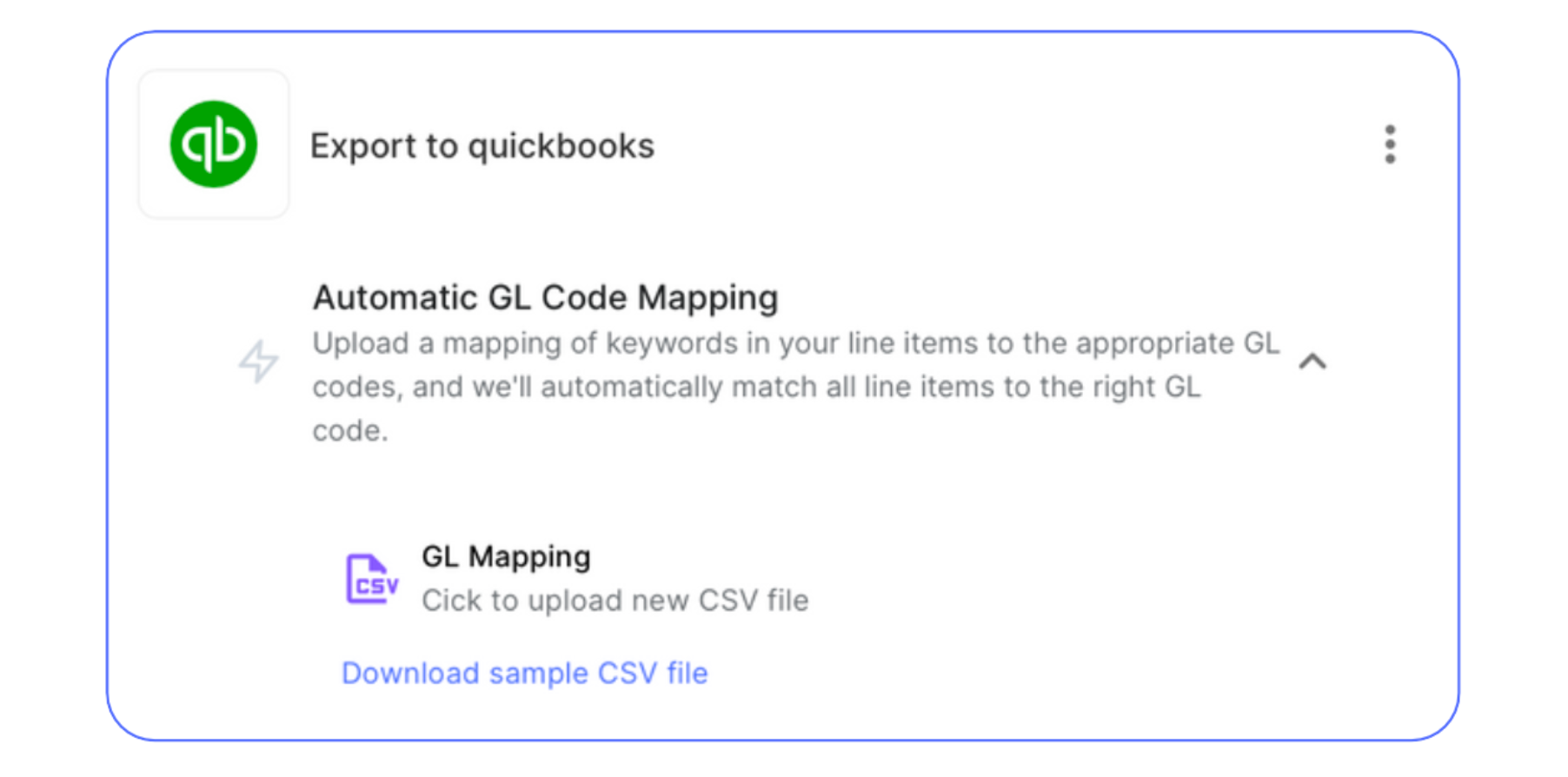
Three Way Matching (Automated): Automated three-way matching compares POs, delivery receipts, and invoices, flagging discrepancies.

Approvals (Streamlined): Approvals with Nanonets are no longer a bottleneck. They become flexible and live where your organization does—whether that’s on email, Slack, or Teams. This eliminates the need for disruptive phone calls and the all-too-familiar barrage of reminders.
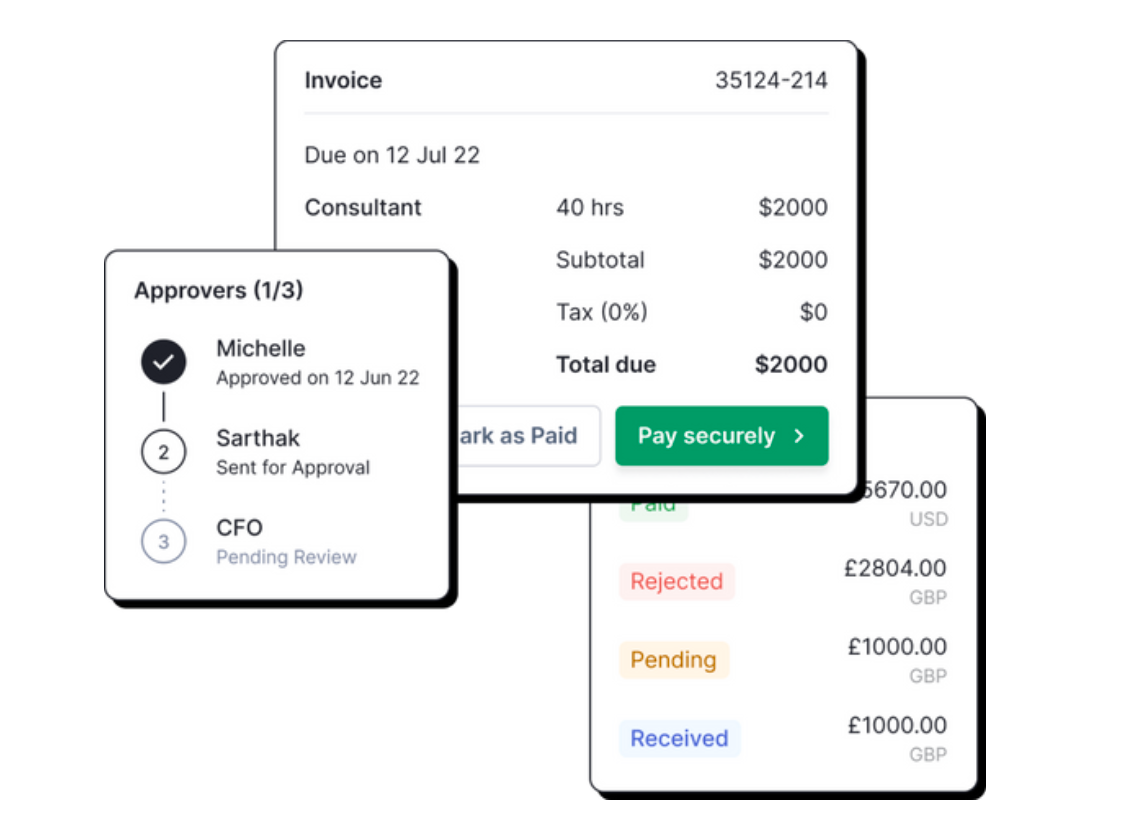
Payment Processing (Automated): You can make direct payments globally using Nanonets, and trust that the system will handle forex charges and avoid sudden chargebacks.
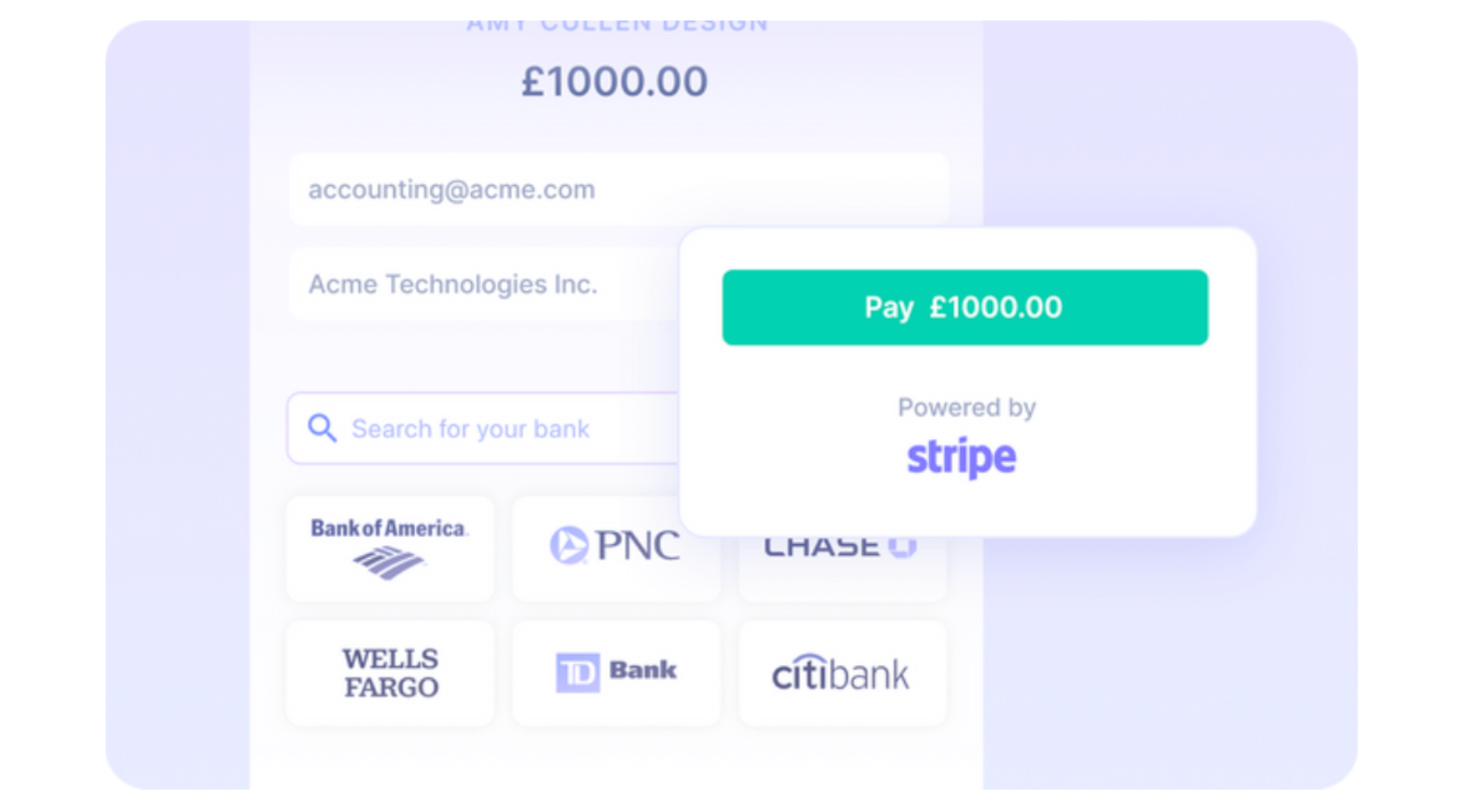
Reconciliation (Automated): Finally, let’s talk about closing the books. Automatic reconciliation imports your bank statements and transforms this often arduous task, matching bank transactions with ledger entries in a fraction of the time it used to take. What once took days can now be done in minutes.
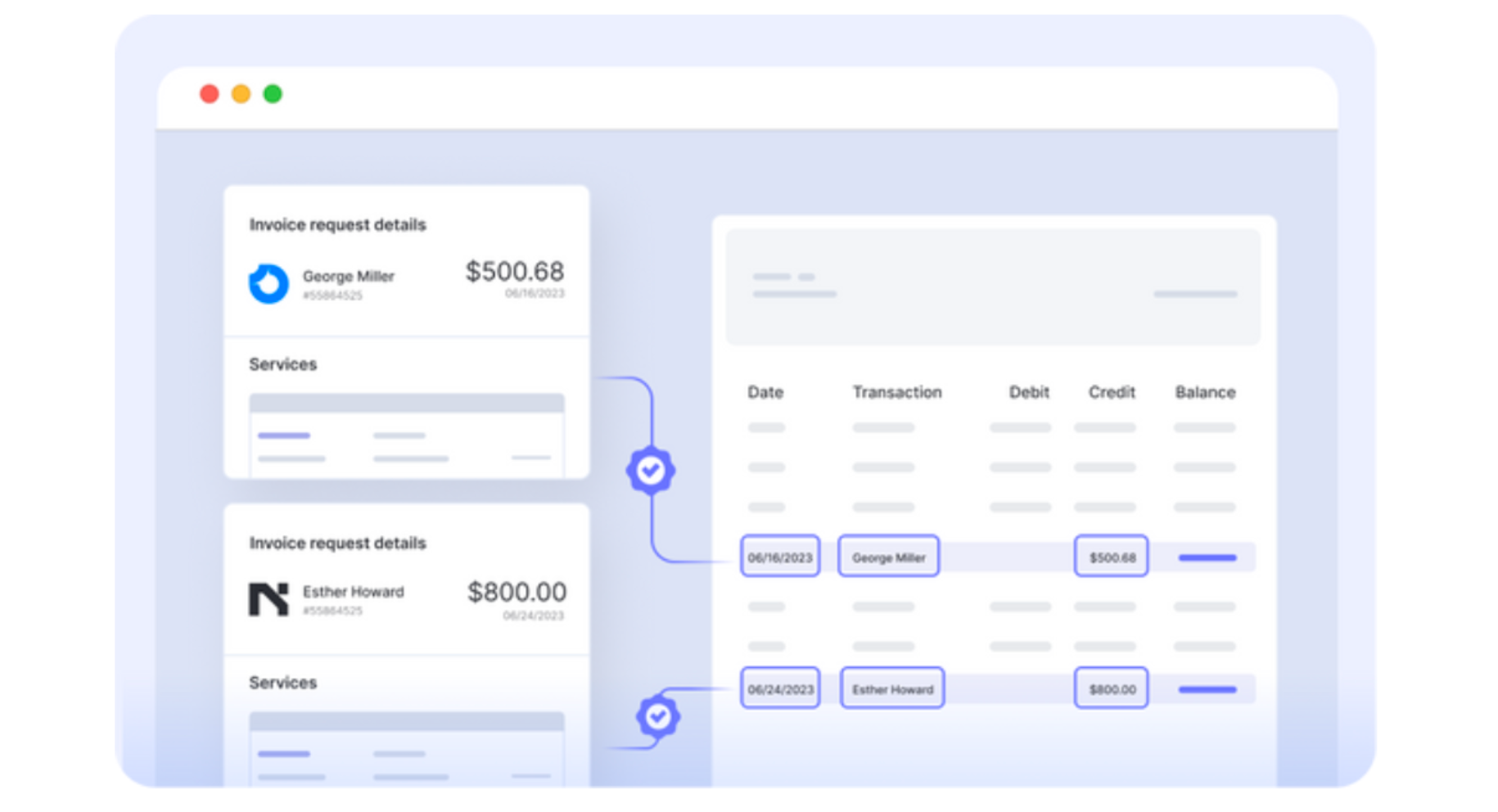
Thus, procurement automation with Nanonets transforms the traditional procurement process into a highly efficient, data-driven, and strategic function. It not only alleviates the burden of manual tasks but also enables finance teams to focus on higher-value activities such as cost optimization, strategic sourcing, and building supplier partnerships.
Conclusion
In conclusion, the essence of procurement transcends the mere act of purchasing goods and services. It embodies a strategic function critical to driving value, optimizing costs, and fostering sustainable growth within organizations. As we’ve explored throughout this blog, the procurement process is intricate, involving stages from need identification through supplier evaluation, contract negotiation, and beyond, each requiring meticulous attention and strategic thinking.
The advent of procurement automation software marks a significant evolution in this domain, offering the promise of streamlined operations, enhanced efficiency, and strategic insights that were previously unattainable. By leveraging technology, businesses can overcome traditional challenges, mitigate risks, and capitalize on opportunities to enhance their procurement functions.
Moreover, the strategic management of supplier relationships, a focus on quality assurance, and the adoption of comprehensive risk management practices are vital components that further the effectiveness of procurement. These elements, combined with a commitment to continuous improvement and benchmarking against industry standards, will position organizations to realize the full potential of their procurement capabilities.
To explore how Nanonets Procurement Automation can transform your procurement process and to learn more about its features, you can schedule a call with a Nanonets expert. This opportunity allows you to discuss your specific procurement challenges and demo how Nanonets can streamline your procurement workflows, from need identification to invoice processing and reconciliation. Whether you’re looking to improve efficiency, gain better visibility into your spending, or enhance supplier relationships, Nanonets has the tools and expertise to help.
Schedule a Call Here






